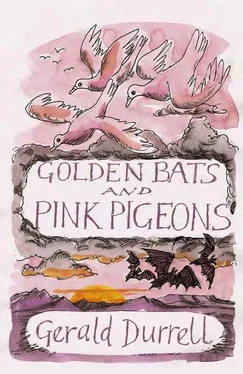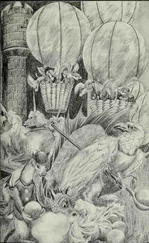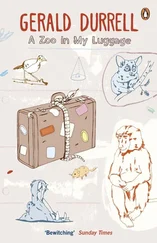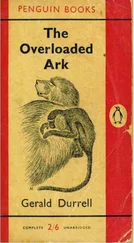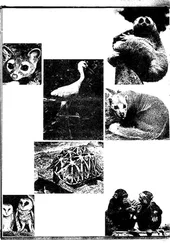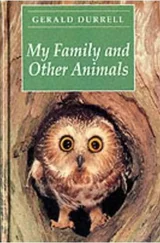Gerald Durrell - Golden Bats and Pink Pigeons
Здесь есть возможность читать онлайн «Gerald Durrell - Golden Bats and Pink Pigeons» весь текст электронной книги совершенно бесплатно (целиком полную версию без сокращений). В некоторых случаях можно слушать аудио, скачать через торрент в формате fb2 и присутствует краткое содержание. Жанр: Природа и животные, на английском языке. Описание произведения, (предисловие) а так же отзывы посетителей доступны на портале библиотеки ЛибКат.
- Название:Golden Bats and Pink Pigeons
- Автор:
- Жанр:
- Год:неизвестен
- ISBN:нет данных
- Рейтинг книги:4 / 5. Голосов: 1
-
Избранное:Добавить в избранное
- Отзывы:
-
Ваша оценка:
- 80
- 1
- 2
- 3
- 4
- 5
Golden Bats and Pink Pigeons: краткое содержание, описание и аннотация
Предлагаем к чтению аннотацию, описание, краткое содержание или предисловие (зависит от того, что написал сам автор книги «Golden Bats and Pink Pigeons»). Если вы не нашли необходимую информацию о книге — напишите в комментариях, мы постараемся отыскать её.
Golden Bats and Pink Pigeons — читать онлайн бесплатно полную книгу (весь текст) целиком
Ниже представлен текст книги, разбитый по страницам. Система сохранения места последней прочитанной страницы, позволяет с удобством читать онлайн бесплатно книгу «Golden Bats and Pink Pigeons», без необходимости каждый раз заново искать на чём Вы остановились. Поставьте закладку, и сможете в любой момент перейти на страницу, на которой закончили чтение.
Интервал:
Закладка:
At first, the sandy bottom was flat, littered with the debris of past storms and hurricanes; lumps of coral now covered with weed, and the abode of a million creatures; pieces of pumice stone. On the sand, lay battalions of huge, black sea urchins, with long, slender spines that move constantly like compass needles. Touch one of them, and the spines moving gently to and fro suddenly become violently agitated, waving about with ever-increasing speed like mad knitting needles. They were very fragile as well as being sharp, so that if they penetrated your skin, they broke off. They also stained the immediate area of the puncture, as though you had been given a minute injection of Indian ink. Although they looked black, when the sunlight caught them, you found that they were a most beautiful royal blue with a green base to each spine. This species was fortunately flamboyant enough to be very obvious and, although some lay in crevices and under coral ledges, the majority lay on the sand, singly or in prickly groups, and were very apparent.
Interspersed with these were more of the elongated hosepipes and a further scattering of sea slugs. These, however, appeared to be of a different species. They were very large, some of them eighteen inches long and a mottled, yellowish-green. They also seemed much smoother and fatter than their black cousins, most of them being some four or five inches in diameter. I dived down to pick up one of these dim and unattractive creatures. As I was swimming to the surface with him, he first of all squirted water in the usual way and then, finding this did not make me relinquish my grip on his fat body, exuded his sticky rubber.
I was astonished at the attractive effect it had under water. When the sea slug used this, his ultimate deterrent, in the air, it came out simply as a sort of squishy, white, sticky stream, but viewed under water, the same phenomenon was different and beautiful. The substance was revealed as being composed offifty or more separate strands, each the thickness of fine spaghetti and about eight inches long. One end remained attached to the beast while the filaments at the other end curved out and floated in the water like a delicate white fountain. Whether these strands had the power to sting and perhaps paralyse small fish, I don’t know. One could touch them without feeling anything or getting any irritation, but certainly, spread out in a graceful spray, the tentacles presented much more of an adhesive hazard to an enemy than I had thought.
I swam on and, quite suddenly, like a conjuring trick, I found I was swimming through and over a large school of extraordinary-looking fish. There were about fifty of them; each measured some three to four feet long and was coloured a neutrally-transparent grey, so that it was almost invisible. Their mouths protruded almost into an elongated spike, as did their tails, so that it was difficult to tell at first glance which way they were pointing until you saw their round, rather oafish eyes staring at you with caution. They had obviously been doing something very strenuous and were now exhausted. They hung, immobile in the water, facing the current, meditating. They were most orderly, for they hung in the water in ranks, like well-drilled, if somewhat emaciated soldiers. It was interesting to note that they hung in exactly the right juxtaposition to each other, like troops on parade, so many feet between the fish in front and behind, and the same distance between the one above and the one below and the ones on each side. My sudden presence caused a certain amount of panic in their ranks, like someone marching out of step on an Armistice Day parade, and they swam off in confusion. As soon as they put enough distance between themselves and me, they re-formed ranks, turned to face the tide, and went into a trance again.
Leaving these fish, I swam on, gazing enthralled at the sandy bottom, barred with broad stripes of gold by the sun and these, by some optical alchemy, spangled all over with golden, trembling rings. Then, looming up ahead of me, I saw a shape, a dim blur which materialised into a massive rock some nine feet by three, shaped like the dome of St Paul’s Cathedral. As I got closer, I saw that the whole rock was encrusted with pink, white and greenish corals and on top of it there were four huge, pale bronze sea anemones, attached like flowers to a monstrous, multi-coloured bonnet.
I swam over this fascinating rock and anchored myself against the slow pull of the tide by catching hold of a projecting piece of coral, having first examined it carefully to make sure that there was nothing harmful lurking on, or under, or in it. That this was a wise precaution, I soon realised for as soon as my eyes got focused, I saw lurking, almost invisible, in the coral-and reed-encrusted grotto, a foot or so away from my hand, a large and beautifully coloured Scorpion fish whose dorsal spines can cause you agony and even, in rare cases, death, should you unwittingly touch it and it jabs them into you. He was some seven inches long, with a jowly, pouting face and huge, scarlet eyes. His predominant colours were pink and orange, with black bars and stripes and specklings. His pectoral fins were greatly elongated so he looked as though he had two pink hands growing out from under his gills, with attenuated fingers. Along his back was the row of scarlet spines that could prove so lethal. Altogether, he was a most flamboyant fish and, once you had spotted him, he glowed like a great jewel; yet until I had noticed a slight movement from him, he had, with his striped and spotted livery, melted into the background. Now, realising he had been spotted, he moved his great trailing fins gently and gradually edged his way round and down the rock away from me. Beautiful though he was, I was relieved not to have him at quite such close quarters.
Living in and around the anemones, were some handsome Clown fish, about three inches long, a bright orange colour, banded with broad stripes of snow-white. These pretty little fish have a symbiotic relationship with the anemones. They live among the stinging tentacles which would kill other fish, and so the anemone becomes their home; a formidable fortress in which the Clown fish takes refuge in moments of danger. In return for this protection, the fish, of course, drops some of its food which then becomes the anemone’s lunch. Why, or how, this curious relationship came about, is a mystery. Anemones can hardly be described as having scintillating intellects, and how they managed to work out the usefulness of the Clown fish and refrain from stinging them, is a puzzle.
Wedged deep into the coral here and there were a number of large clams. All that could be seen of them were the rims of their scalloped shells, over which the edge of their mantle protruded, so they appeared to be grinning at you with thick, blue and iridescent green lips. These, each about the size of a coconut, were, of course, relatives of the famous giant clam found farther out on the reef — a monstrous shell that could weigh up to two hundred pounds and measure three feet. Many blood-curdling stories have been written about unfortunate divers who by chance have put their foot into one of these shells, which immediately slammed shut like a man-trap (as all clams do in moments of stress) thus consigning the diver to death by drowning. There does not appear to be an authenticated record of this ever having happened, although of course it is perfectly possible, for the shell could snap shut and unless the diver had a knife with which to cut the massive muscle that acts as both hinge and lock on the two halves of the shell, it would be as immovable and unopenable as a castle door. Again, in the case of these highly coloured clams, there is a curious symbiotic relationship, for in the brilliant mantle there are a number of small, unicellular algae, called by the rather attractive name of
Читать дальшеИнтервал:
Закладка:
Похожие книги на «Golden Bats and Pink Pigeons»
Представляем Вашему вниманию похожие книги на «Golden Bats and Pink Pigeons» списком для выбора. Мы отобрали схожую по названию и смыслу литературу в надежде предоставить читателям больше вариантов отыскать новые, интересные, ещё непрочитанные произведения.
Обсуждение, отзывы о книге «Golden Bats and Pink Pigeons» и просто собственные мнения читателей. Оставьте ваши комментарии, напишите, что Вы думаете о произведении, его смысле или главных героях. Укажите что конкретно понравилось, а что нет, и почему Вы так считаете.
